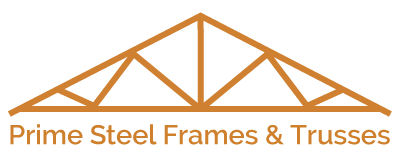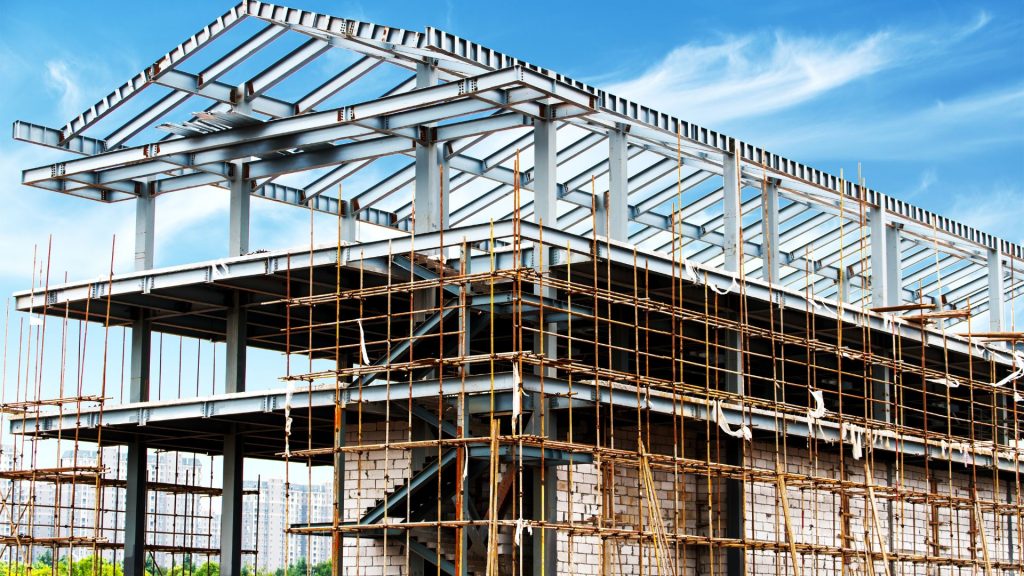When it comes to constructing buildings, the choice of framing material is a critical decision that impacts the structure’s durability, cost, sustainability, and overall performance. Two of the most popular options are steel Frame and timber frame.
Each has its own set of advantages and disadvantages that can influence the decision depending on the specific requirements of the project. This article will delve into the characteristics of both steel and timber frames, comparing their pros and cons to help you determine which material is superior for your construction needs.
Understanding Steel Frame Construction
Characteristics of Steel Frames
Steel frames are known for their strength and durability. Steel comprises 43.5% zinc, 55.0% aluminium and 1.5% silicon with a minimum coating mass of 150g/m2., steel is a robust material that can withstand significant loads and stresses.
Steel framing involves the construction of a skeletal framework, typically using steel beams and columns. This method is commonly used in commercial and industrial buildings but has also gained popularity in residential construction.
Advantages of Steel Frames
- Strength and Durability: Prime Steel frames and Trusses are incredibly strong, offering high load-bearing capacity. They are resistant to warping, cracking, and splintering, making them ideal for large structures and high-rise buildings.
- Fire Resistance: Steel is non-combustible and can withstand high temperatures, providing better fire resistance compared to timber frames. This quality is particularly important for buildings in fire-prone areas.
- Pest Resistance: Unlike timber, steel is impervious to termites and other pests that can compromise the structural integrity of a building.
- Design Flexibility: Steel’s strength allows for more design flexibility, enabling the construction of larger spans without the need for support columns. This is beneficial for creating open-plan spaces.
- Recyclability: Steel is one of the most recycled materials in the world. It can be reused multiple times without losing its properties, making it an environmentally friendly option.
Disadvantages of Steel Frames
- Cost: The initial cost of steel framing can be higher than timber due to the price of steel and the need for specialized labor. This can make steel less attractive for budget-conscious projects.
- Thermal Conductivity: Steel is a good conductor of heat, which can lead to thermal bridging. This can cause heat loss in colder climates or heat gain in warmer climates, impacting energy efficiency.
- Corrosion: Steel is susceptible to rust and corrosion if not properly treated and maintained. This is particularly a concern in coastal areas where saltwater exposure is high.
Understanding Timber Frame Construction
Characteristics of Timber Frames
Timber frames, also known as wood frames, have been used in construction for centuries. Timber framing involves using wooden beams and posts to create the structural support of a building. This method is favored for its natural aesthetic and environmental benefits.
Advantages of Timber Frames
- Cost-Effective: Timber is generally less expensive than steel, both in terms of material costs and labor. This makes timber framing a cost-effective choice for many types of buildings.
( Note: price between steel and timber at the current market is 5% cheaper)
- Insulation Properties: Wood has natural insulating properties, which can help reduce energy costs by maintaining indoor temperatures. Timber frames contribute to better energy efficiency compared to steel.
- Sustainability: Timber is a renewable resource. When sourced from sustainably managed forests, it can be an environmentally friendly option. Additionally, timber frames have a lower carbon footprint compared to steel.
- Aesthetics: Timber offers a warm, natural appearance that is highly desirable in residential architecture. Exposed wooden beams can add character and charm to a building’s interior.
- Ease of Construction: Timber frames can be easier and quicker to construct compared to steel frames. This can lead to shorter construction times and lower labor costs.
Disadvantages of Timber Frames
- Fire Risk: Timber is combustible, making it less fire-resistant than steel. This can be a significant concern in areas prone to wildfires.
- Pest Vulnerability: Timber is susceptible to damage from termites and other pests. Without proper treatment, these infestations can weaken the structural integrity of the building.
- Durability Issues: Wood can warp, crack, and rot over time, especially when exposed to moisture. This can lead to maintenance challenges and potential structural problems.
- Design Limitations: Timber may not offer the same level of design flexibility as steel. Larger spans without support can be challenging, which may limit some architectural designs.
Comparative Analysis: Steel Frame vs Timber Frame
Strength and Durability
When it comes to strength and durability, steel frames have a clear advantage. Steel’s superior load-bearing capacity and resistance to environmental factors such as pests and fire make it a more durable option.
Timber, while strong, can degrade over time due to moisture and pest exposure, requiring more maintenance.
Cost
Cost is a significant factor in construction. Timber frames generally have lower initial costs compared to steel. However, the long-term maintenance costs associated with timber, such as pest control and potential structural repairs, can add up.
Steel, despite its higher upfront cost, may prove more economical in the long run due to its durability and lower maintenance needs.
Environmental Impact
From an environmental perspective, timber frames have the upper hand when sourced sustainably. Wood is a renewable resource and has a lower carbon footprint than steel.
However, steel is highly recyclable, which mitigates some of its environmental impact. Both materials can be environmentally friendly if used responsibly.
Thermal Performance
Timber’s natural insulating properties make it a better choice for energy efficiency. Buildings with timber frames tend to have lower heating and cooling points.
Steel, due to its thermal conductivity, may require additional insulation measures to prevent heat loss or gain.
Fire and Pest Resistance
Prime Steel frames and Trusses excel in fire and pest resistance. Their non-combustible nature makes them a safer choice in fire-prone areas.
Additionally, steel’s resistance to termites and other pests eliminates the risk of structural damage from infestations.
Timber frames, on the other hand, require treatment and regular inspections to mitigate these risks.
Design Flexibility
For architects and designers, steel offers greater flexibility. Its strength allows for the creation of larger, open spaces without the need for numerous support columns.
This can lead to more innovative and spacious designs. Timber, while offering a beautiful aesthetic, may impose some design limitations due to its structural properties.
Conclusion: Which Material Is Superior?
Determining whether steel or timber is the superior framing material depends largely on the specific needs and priorities of the project.
- For Strength and Durability: Steel is the superior choice due to its robustness and longevity. It is particularly well-suited for large, high-rise structures and buildings requiring high load-bearing capacity.
- For Cost-Effectiveness: Timber offers lower initial costs and ease of construction, making it an attractive option for residential projects and budget-conscious builds.
- For Environmental Sustainability: Timber, when sourced sustainably, has the edge due to its renewable nature and lower carbon footprint. However, steel’s recyclability also presents a strong case for its environmental benefits.
- For Energy Efficiency: Timber’s natural insulating properties make it a better choice for thermal performance, potentially leading to lower energy costs.
- For Fire and Pest Resistance: Steel is clearly superior, providing peace of mind in fire-prone and pest-infested areas.
- For Design Flexibility: Steel allows for more innovative architectural designs with larger open spaces.
Ultimately, the choice between steel and timber framing should be based on a careful consideration of these factors in relation to the specific requirements and constraints of the project.
Both materials have their unique strengths and can perform excellently when used in the right context. Therefore, rather than declaring one material as universally superior, it is more practical to assess which material best aligns with the goals and conditions of your particular construction project.



